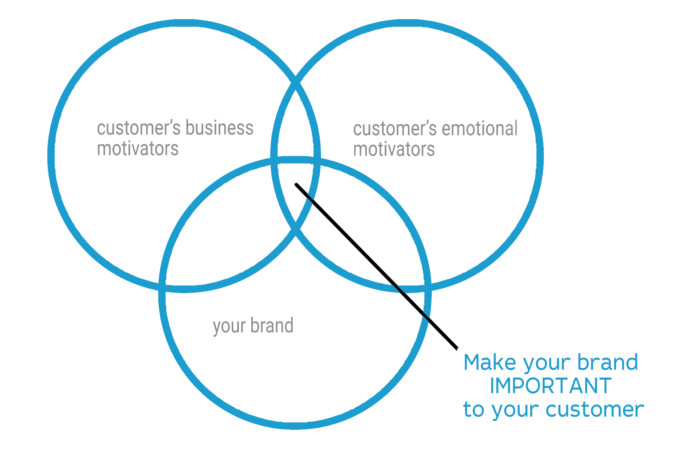
B2B Branding
In case you’re still not convinced of the power of branding in today’s marketplace, here’s some information you need to know:
- Consumer buying behavior applies increasingly to B2B purchase cycles. This means developing an emotional connection with your buyers is essential to success.
- The key difference between B2C and B2B branding? Buying teams and purchasing controls, which means your brand has to work harder to connect with buying teams and potentially several buyer personas in the purchase process.
-
Since time is valuable, buyers tend to first search brands with which they’re familiar. If they find what’s needed, end of story. There is a documented correlation between improved brand recognition and increased odds of higher profit margins.
-
The power of branding is strong; buyers tend to trust their perception of your brand even over what you might tell them about your product – if your
perceived value is poor or lackluster, you’re outshone by another and will work hard to win customers.
B2B Brand Development and Alignment Process
To begin with, we provide a step-by-step workshop called a Marketing Growth Initiative, to help our customers identify and focus their “business value connector”, your strongest offer.

The offer is what our client should be saying to make their product and service different and better than their competitors. This workshop process gets our customer’s team all on the same page and provides a real motivator.
Following that, the next element is an emotional connector development process to help your brand make your customer feel something.
To quote the Harvard Business Review article: The new science of consumer emotions.
“When companies connect with customers’ emotions, the payoff can be huge.”
Customers are emotionally connected with a brand when it aligns with their motivations, beliefs, interests and aspirations. Many emotional motivators drive behavior, including desires to “stand out from the crowd,” “have confidence in the future,” and “do business with a company with shared values.”
Defining both your business connector and emotional connector, gives you powerful tools to differentiate your brand.
This methodology puts the focus on both what you do and why you do it.
While marketing lets potential customers know what you can offer them, branding gives them a reason to specifically choose your business over others that may offer the same basic products or services.
Once we have built our customer’s brand language and image, we go about the business of educating their target audience. We build and execute a plan increase visibility, engagement, and drive results that improve business growth for our customers.
How does branding help my organization?
One of the principal challenges our customers face today is how can they stand out in the enormity of the internet.
We all face the fact that there are well over 1 billion sites on the world wide web.
There are about 124.5 billion business emails sent and received each day.
There are 228 million google searches per hour, and 5.6 billion searches per day.
How can they stand out from their competitors in their chosen marketplace?
How can they make their voice strong enough and vast enough to drive repeated visits to their websites and events? We know that prospects tend to visit a site five to seven times before they will raise their hand for human connection.
How can they ultimately establish real brand loyalty?
How can what they stand for be so business value strong and emotionally connecting to prospects and customers that it over rides the today’s bright shiny object syndrome affect or lowest price?
How can they build and leverage their brand to gain financial value?
Companies who publicly trade on a stock exchange are valued at many times the actual hard assets of the company. Much of this value is due to the branding of the company. A strong brand often guarantees future business.
Whether a company is in the position to borrow funds for expansion or rolling out to an IPO, being perceived as more valuable will make the process advantageous for the owner. The greater a company’s devotion to building its brand value, the better the financial return from its efforts.
These questions are typically on the forefront of our customers minds. There are certainly many contributors to overcoming these challenges, but certainly a primary one is the establishment of a strong brand.

